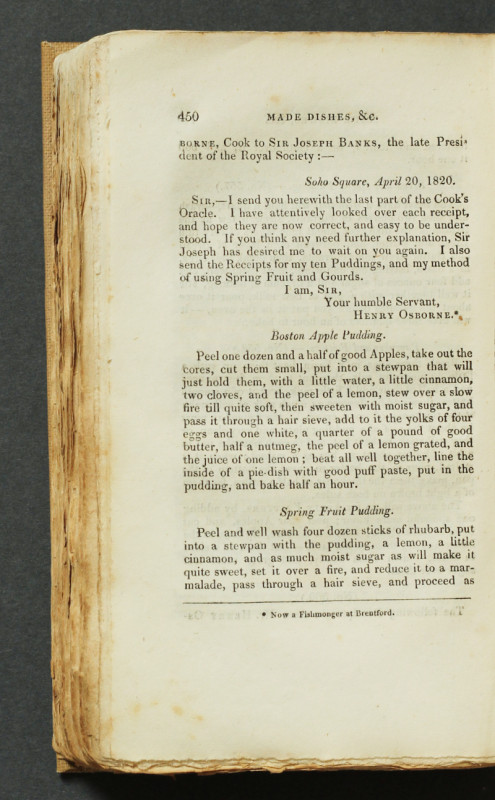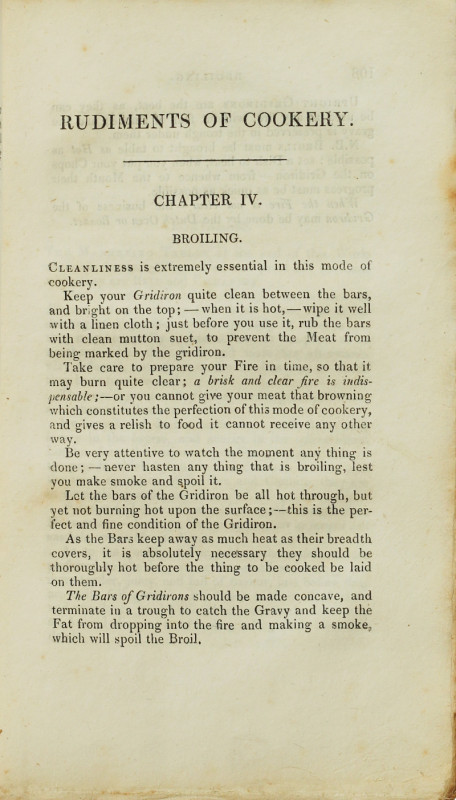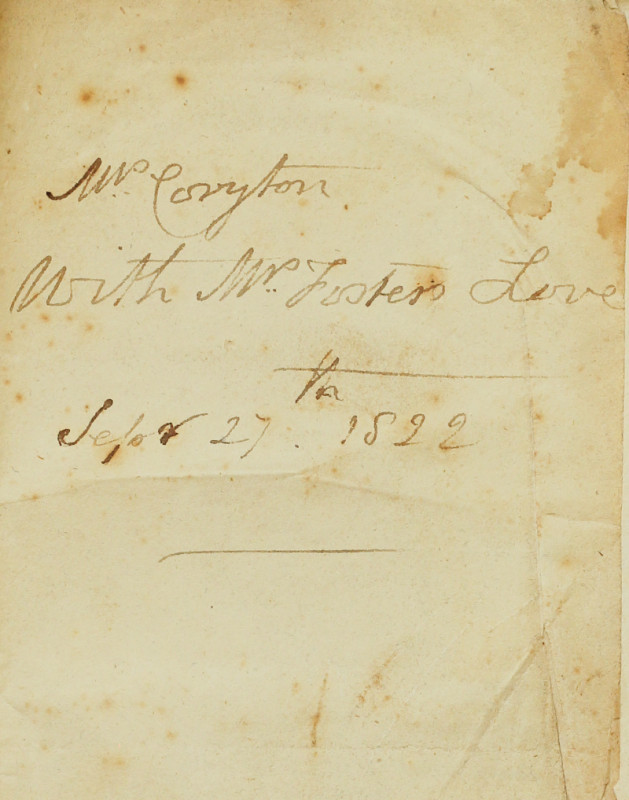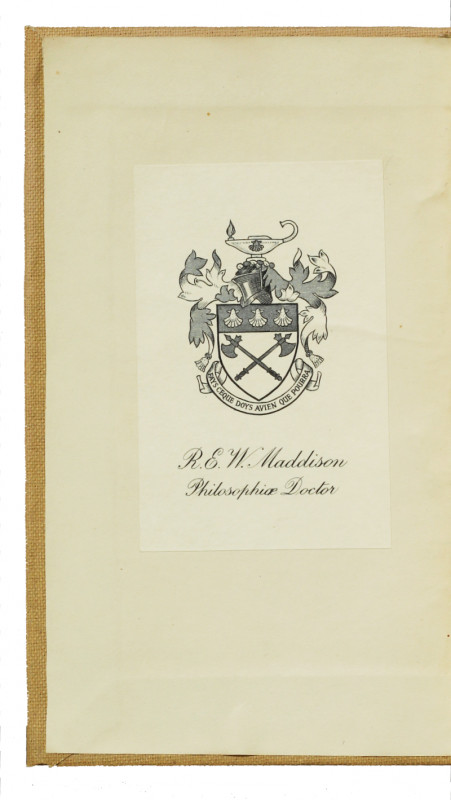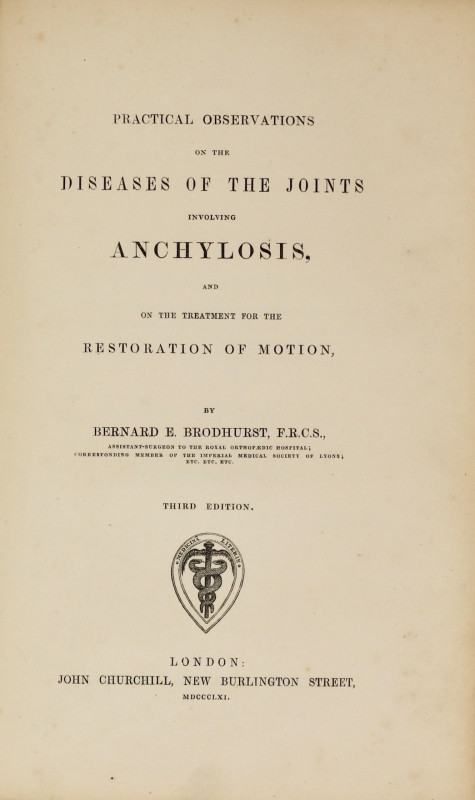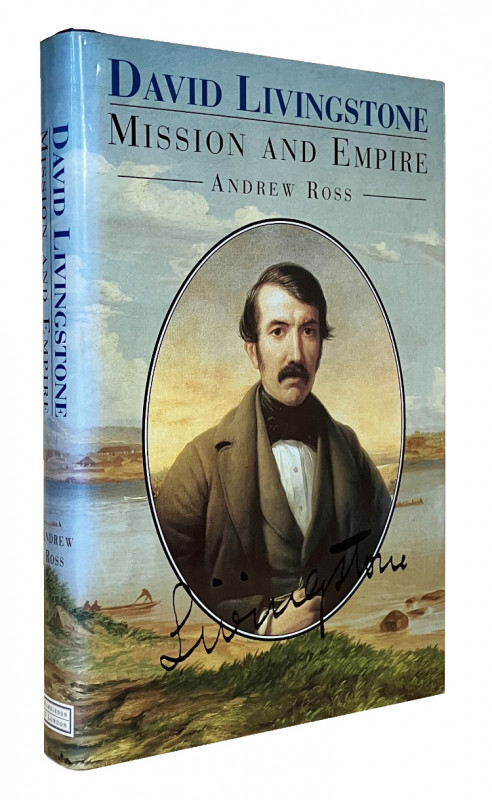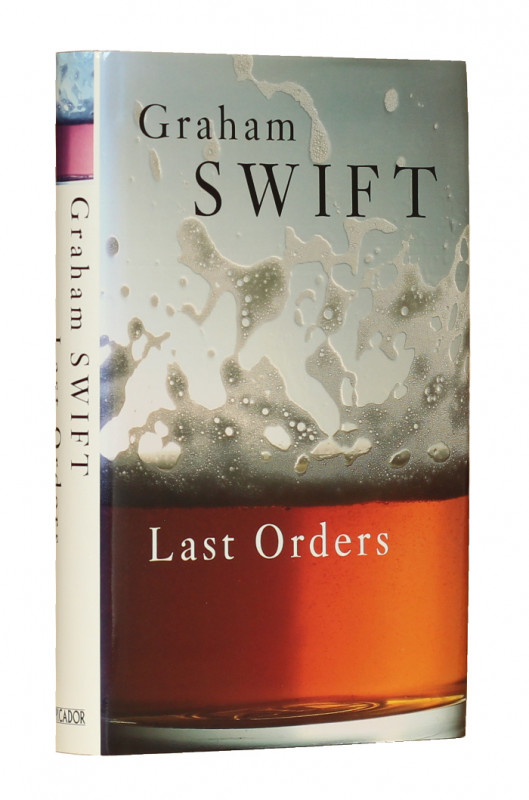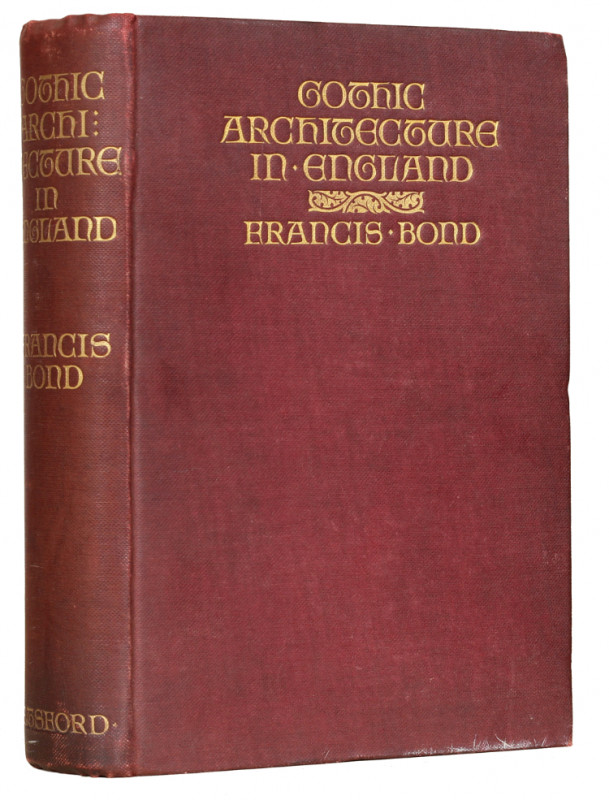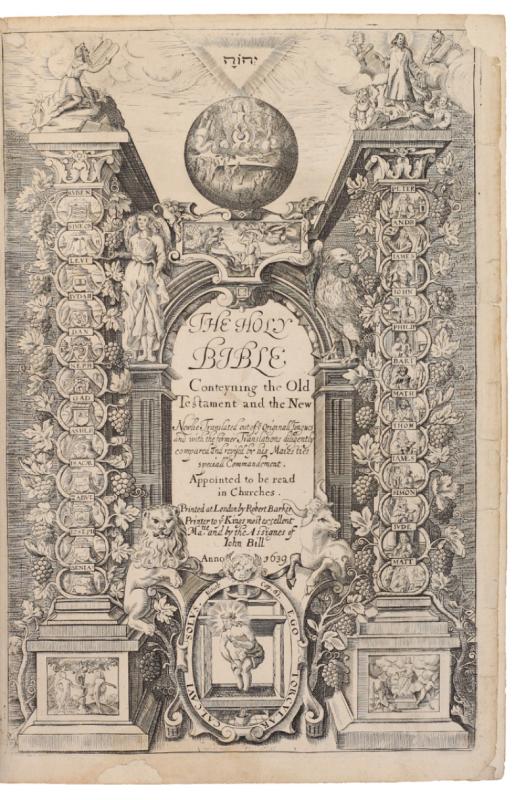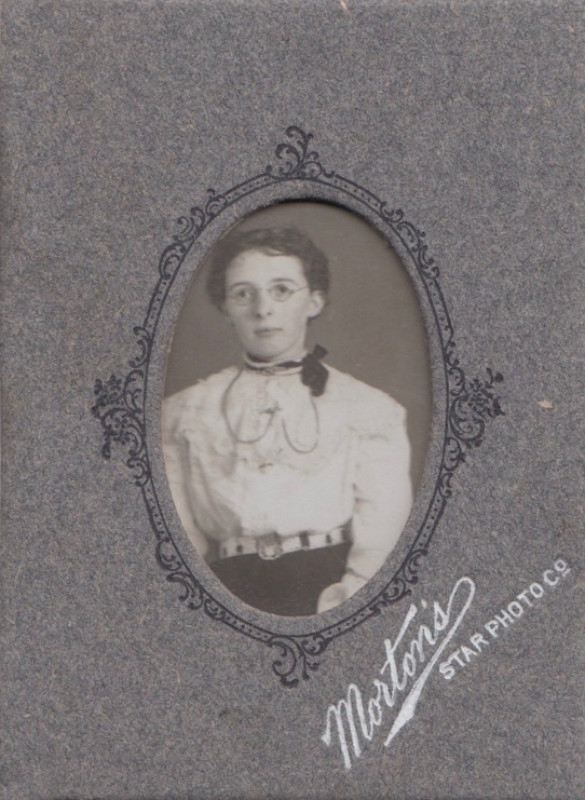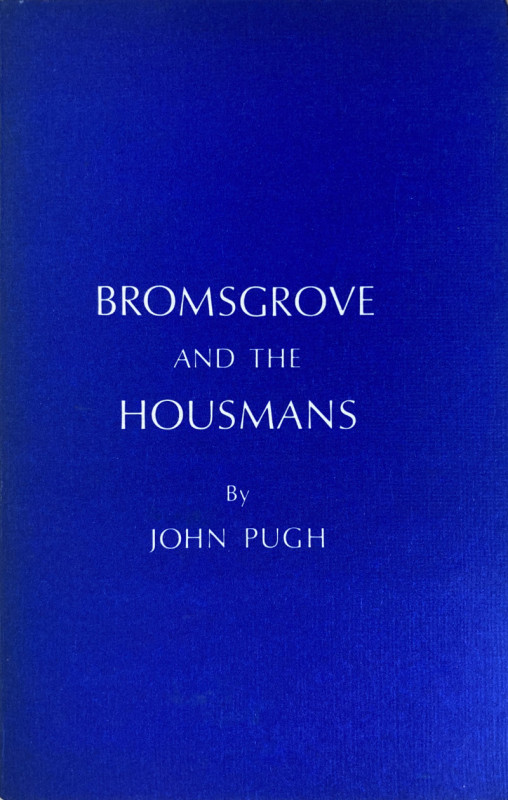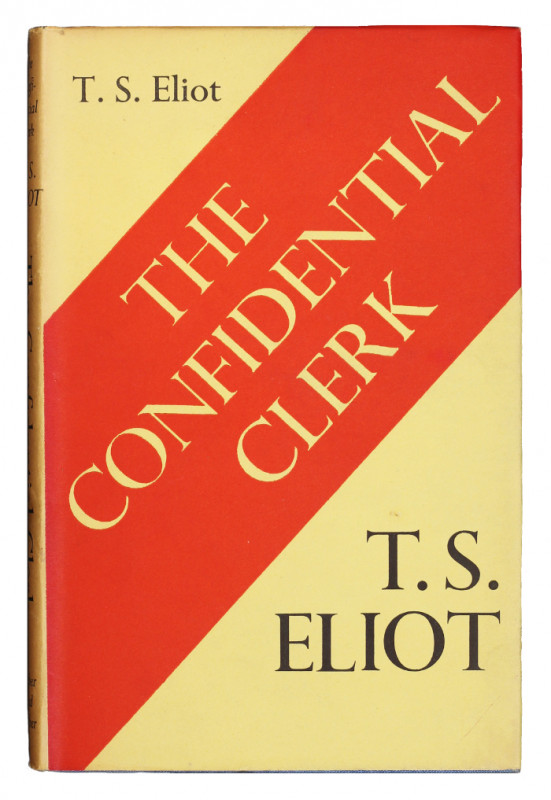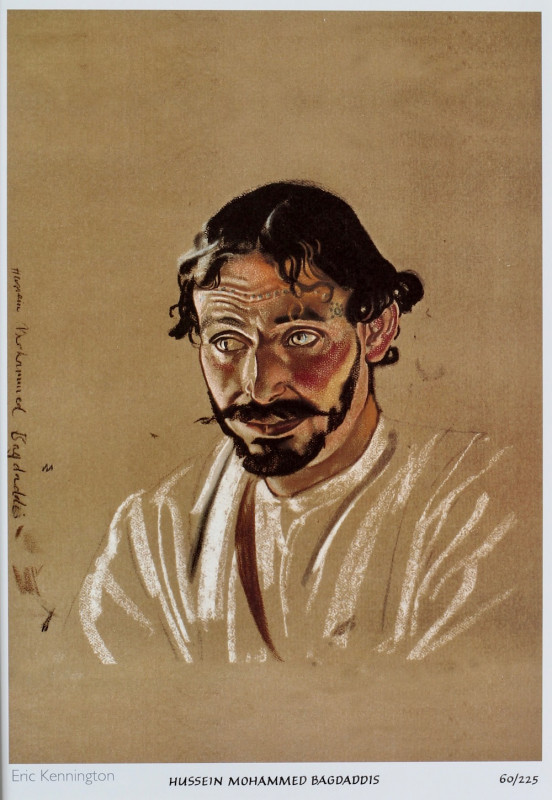The Cook’s Oracle; Containing Receipts for Plain Cookery ...
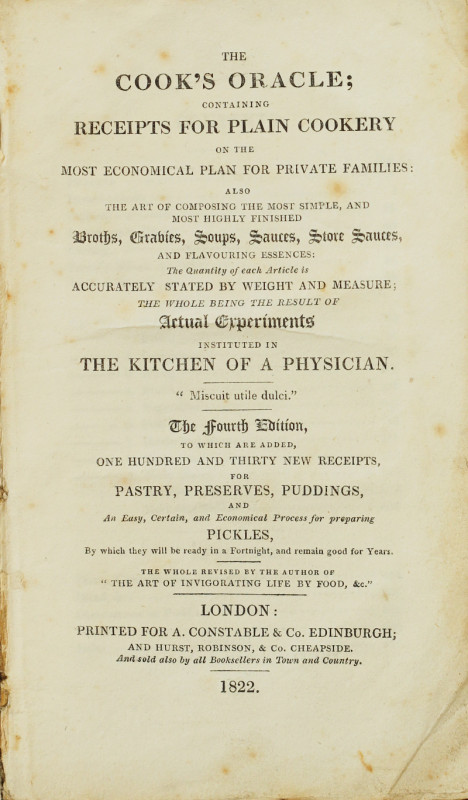



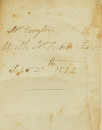

Book Description
Full title: The Cook’s Oracle; Containing Receipts for Plain Cookery on the Most Economical Plan for Private Families: also, The Art of Composing the Most Simple, and the Most Highly Finished Broths, Gravies, Soups, Sauces, Store Sauces, and Flavouring Essences: The Quantity of each Article is Accurately Stated by Weight and Measure; The Whole being the Result of Actual Experiments Instituted in the Kitchen of a Physician ... The Fourth Edition, to which are Added, One Hundred and Thirty New Receipts, for Pastry, Preserves, Puddings, and an Easy, Certain, and Economical Process for Preparing Pickles, by which they will be Ready in a Fortnight, and Remain Good for Years.
Duodecimo (190 x 115mm), pp. xviii (title, imprint, contents, title/advertisement for the ‘third edition, enlarged’ of The Art of Invigorating and Prolonging Life... by the Author of “The Cook’s Oracle”, Preface to the Third Edition, Preface to the Fourth Edition), 545, [1 (blank)], [2 (final blank l. 2B4)]. Woodcut music on pp. 113 and 414, woodcut rules and double rules. Q5 unsigned. (Some light spotting and marking, occasional small marginal losses caused by clumsy opening). Late-20th-century beige buckram, retaining original printed paper spine-label, uncut, retaining early front free endpaper. (Some slight fading on spine and outer parts of boards, extremities slightly rubbed and bumped, quire Z partially pulled, bookblock split before first and last quires.) A very good copy.
Provenance: Mrs Coryton, 27 September 1822 (presentation inscription on retained front free endpaper ‘Mrs Coryton with Mrs Foster’s Love Sep[tembe]r 27th 1822’) – Robert Edwin Witton Maddison, PhD, DLitt, FSA, FRAS (1901-1993, engraved armorial bookplate on upper pastedown).
Duodecimo (190 x 115mm), pp. xviii (title, imprint, contents, title/advertisement for the ‘third edition, enlarged’ of The Art of Invigorating and Prolonging Life... by the Author of “The Cook’s Oracle”, Preface to the Third Edition, Preface to the Fourth Edition), 545, [1 (blank)], [2 (final blank l. 2B4)]. Woodcut music on pp. 113 and 414, woodcut rules and double rules. Q5 unsigned. (Some light spotting and marking, occasional small marginal losses caused by clumsy opening). Late-20th-century beige buckram, retaining original printed paper spine-label, uncut, retaining early front free endpaper. (Some slight fading on spine and outer parts of boards, extremities slightly rubbed and bumped, quire Z partially pulled, bookblock split before first and last quires.) A very good copy.
Provenance: Mrs Coryton, 27 September 1822 (presentation inscription on retained front free endpaper ‘Mrs Coryton with Mrs Foster’s Love Sep[tembe]r 27th 1822’) – Robert Edwin Witton Maddison, PhD, DLitt, FSA, FRAS (1901-1993, engraved armorial bookplate on upper pastedown).
Dealer Notes
THE FOURTH EDITION OF KITCHINER’S CLASSIC COOKBOOK, INSCRIBED IN THE YEAR OF PUBLICATION ‘MRS CORYTON WITH MRS FOSTER’S LOVE’
Fourth, enlarged edition. This classic among the early-nineteenth-century cookery books was first published in 1817 titled Apicius Redevivus, or The Cook’s Oracle, but soon became known simply as The Cook’s Oracle. Its author, although not given on the title by name (but rather simply referred to as ‘a Physician’), was one William Kitchiner (1778-1827), who claimed to have been educated at Eton and to have obtained ‘a Scottish medical degree’ from Glasgow – a qualification ‘which barred him from practice in England, [so that] he could style himself Dr Kitchiner MD, and as he possessed an extensive library of medical books, this title was not challenged’ (ODNB). Thanks to a large inheritance Kitchiner was able to spend much of his time and efforts on his passions: optics (which gained him a fellowship of the Royal Society), music, and gastronomy.
Kitchiner hosted infamous luncheons and dinners at his home in Warren Street, Marylebone, accompanied by music and lively discussions. The Cook’s Oracle is a collection of recipes for the dishes he served to a ‘committee of taste’ constituted from eminent members of society. One of the regular guests, the journalist William Jerdan, recalled the dinners with some bemusement, stating drily that Kitchiner’s ‘medical (“Peptic”) precepts and gastronomic practices were wonderfully combined, insomuch that it was not always easy to tell, in partaking of what was set before you, whether you might be swallowing a meal or a prescription at his hospitable, or, as the case might be, his hospital board [...]. The dinners at which he entertained a few of his intimates (generally six or eight, at most) were by no means so bizarre as rumour gave them out. If the oddities were there, there was always a fair counterbalance of the relishable and genuine’ (Men I have Known (1866), p. 283).
Some of the hundreds of recipes recorded in The Cook’s Oracle were prepared with the help of Henry Osborne, chef to Sir Joseph Banks, and the preface to the third edition reproduced at the beginning of this edition states, among other things, that ‘that worthy President of the Royal Society [i.e. Banks] was so sensible of the importance of the subject the Editor was investigating – that He sent his Cook to assist him in his arduous task’ (pp. xiii-xiv). The recipes corrected by Osborne are gathered under one heading (No. 560) and comprise ten puddings, six recipes using ‘spring fruit’ (rhubarb, gooseberries) and four for gourd dishes. The brief preface to the fourth edition points out an additional ‘One Hundred and Thirty New Receipts’ for ‘the best methods of making Omelettes, Puddings, Maigre and Savoury Pasties, Maigre and Savoury Patties, Preserves, Tarts, Cakes, and the general business of The Pastry Cook and the Baker’ as well as ‘an easy and economical Process for preparing Pickles’, adding the caveat that ‘some of them have not yet been proved in [...] [the] kitchen’ (pp. xvii-xviii).
The Cook’s Oracle is by far Kitchiner’s most famous and popular cookbook and is described by the ODNB as ‘written in a down-to-earth style’, which demonstrates his ‘familiarity with the entire process, from shopping, through preparing and serving the dishes, to cleaning up. It was an acknowledged source of inspiration for Mrs Beeton, and was mined by the writers of other household guides’. Quayle, by contrast, finds the book ‘interesting and unwittingly amusing’, and aligned with the fashion for ‘outlandish publications’ following the close of the Napoleonic wars (Quayle, Old Cook Books, pp. 151 and 149). The popularity of The Cook’s Oracle ensured some twenty editions to appear by 1840, and this fourth edition was followed by a fifth and a sixth edition in the following year. This copy was given to one Mrs Coryton by Mrs Foster in the year of publication (the inscription is dated 27 September 1822), and is a relatively uncommon example of a Regency-era cookery book being given by one woman to another.
In the following century, this copy was in the noted library of the historian of science and bibliophile R.E.W. Maddison, who was educated at King’s College, London where he was awarded a BSc in 1921 and a PhD in 1924. After working as an industrial chemist and a schoolmaster at Wellington College , Maddison devoted his professional energies to the history of science: he held a Leverhulme Research Fellowship in 1962-1964 and was appointed Librarian of the Royal Astronomical Society in 1965, holding the position until his retirement ten years later. As Maddison’s obituarist J.A. Bennett commented, ‘[i]t is remarkable that he achieved so much in a field which he came to, at least professionally, late in life. [...] His major work as a historian was The Life of the Honourable Robert Boyle, published by Taylor & Francis in 1969’ (‘Obituary R. E. W. Maddison (1901-93)’, Annals of Science, vol. 52 (1995), p. 306), and Maddison was also an editor of Annals of Science from 1966 to 1974. The son of a bookseller, Maddison was ‘an ardent and perceptive book collector’ and ‘[f]or many years he acted as a consultant on scientific books to the old-established antiquarian bookseller, Edward G. Allen’ (R.E. Maddison, ‘Robert Edwin Witton Maddison (1901-1993)’, Quarterly Journal of the Royal Astronomical Society, vol. 36 (1995), p. 457-458 at p. 457); unsurprisingly, he amassed a large and wide-ranging library, which reflected the breadth of his interests not only in the history of science, but also literature, history, music, languages, and other fields.
Bitting, p. 262n; Drexel, Catalog der Kochbücher-Sammlung, 1174; Oxford, p. 146n.
*** To order this book, please contact us directly or purchase from our website: www.typeandforme.com - Books ***
Fourth, enlarged edition. This classic among the early-nineteenth-century cookery books was first published in 1817 titled Apicius Redevivus, or The Cook’s Oracle, but soon became known simply as The Cook’s Oracle. Its author, although not given on the title by name (but rather simply referred to as ‘a Physician’), was one William Kitchiner (1778-1827), who claimed to have been educated at Eton and to have obtained ‘a Scottish medical degree’ from Glasgow – a qualification ‘which barred him from practice in England, [so that] he could style himself Dr Kitchiner MD, and as he possessed an extensive library of medical books, this title was not challenged’ (ODNB). Thanks to a large inheritance Kitchiner was able to spend much of his time and efforts on his passions: optics (which gained him a fellowship of the Royal Society), music, and gastronomy.
Kitchiner hosted infamous luncheons and dinners at his home in Warren Street, Marylebone, accompanied by music and lively discussions. The Cook’s Oracle is a collection of recipes for the dishes he served to a ‘committee of taste’ constituted from eminent members of society. One of the regular guests, the journalist William Jerdan, recalled the dinners with some bemusement, stating drily that Kitchiner’s ‘medical (“Peptic”) precepts and gastronomic practices were wonderfully combined, insomuch that it was not always easy to tell, in partaking of what was set before you, whether you might be swallowing a meal or a prescription at his hospitable, or, as the case might be, his hospital board [...]. The dinners at which he entertained a few of his intimates (generally six or eight, at most) were by no means so bizarre as rumour gave them out. If the oddities were there, there was always a fair counterbalance of the relishable and genuine’ (Men I have Known (1866), p. 283).
Some of the hundreds of recipes recorded in The Cook’s Oracle were prepared with the help of Henry Osborne, chef to Sir Joseph Banks, and the preface to the third edition reproduced at the beginning of this edition states, among other things, that ‘that worthy President of the Royal Society [i.e. Banks] was so sensible of the importance of the subject the Editor was investigating – that He sent his Cook to assist him in his arduous task’ (pp. xiii-xiv). The recipes corrected by Osborne are gathered under one heading (No. 560) and comprise ten puddings, six recipes using ‘spring fruit’ (rhubarb, gooseberries) and four for gourd dishes. The brief preface to the fourth edition points out an additional ‘One Hundred and Thirty New Receipts’ for ‘the best methods of making Omelettes, Puddings, Maigre and Savoury Pasties, Maigre and Savoury Patties, Preserves, Tarts, Cakes, and the general business of The Pastry Cook and the Baker’ as well as ‘an easy and economical Process for preparing Pickles’, adding the caveat that ‘some of them have not yet been proved in [...] [the] kitchen’ (pp. xvii-xviii).
The Cook’s Oracle is by far Kitchiner’s most famous and popular cookbook and is described by the ODNB as ‘written in a down-to-earth style’, which demonstrates his ‘familiarity with the entire process, from shopping, through preparing and serving the dishes, to cleaning up. It was an acknowledged source of inspiration for Mrs Beeton, and was mined by the writers of other household guides’. Quayle, by contrast, finds the book ‘interesting and unwittingly amusing’, and aligned with the fashion for ‘outlandish publications’ following the close of the Napoleonic wars (Quayle, Old Cook Books, pp. 151 and 149). The popularity of The Cook’s Oracle ensured some twenty editions to appear by 1840, and this fourth edition was followed by a fifth and a sixth edition in the following year. This copy was given to one Mrs Coryton by Mrs Foster in the year of publication (the inscription is dated 27 September 1822), and is a relatively uncommon example of a Regency-era cookery book being given by one woman to another.
In the following century, this copy was in the noted library of the historian of science and bibliophile R.E.W. Maddison, who was educated at King’s College, London where he was awarded a BSc in 1921 and a PhD in 1924. After working as an industrial chemist and a schoolmaster at Wellington College , Maddison devoted his professional energies to the history of science: he held a Leverhulme Research Fellowship in 1962-1964 and was appointed Librarian of the Royal Astronomical Society in 1965, holding the position until his retirement ten years later. As Maddison’s obituarist J.A. Bennett commented, ‘[i]t is remarkable that he achieved so much in a field which he came to, at least professionally, late in life. [...] His major work as a historian was The Life of the Honourable Robert Boyle, published by Taylor & Francis in 1969’ (‘Obituary R. E. W. Maddison (1901-93)’, Annals of Science, vol. 52 (1995), p. 306), and Maddison was also an editor of Annals of Science from 1966 to 1974. The son of a bookseller, Maddison was ‘an ardent and perceptive book collector’ and ‘[f]or many years he acted as a consultant on scientific books to the old-established antiquarian bookseller, Edward G. Allen’ (R.E. Maddison, ‘Robert Edwin Witton Maddison (1901-1993)’, Quarterly Journal of the Royal Astronomical Society, vol. 36 (1995), p. 457-458 at p. 457); unsurprisingly, he amassed a large and wide-ranging library, which reflected the breadth of his interests not only in the history of science, but also literature, history, music, languages, and other fields.
Bitting, p. 262n; Drexel, Catalog der Kochbücher-Sammlung, 1174; Oxford, p. 146n.
*** To order this book, please contact us directly or purchase from our website: www.typeandforme.com - Books ***
Author
[KITCHINER, William]
Date
1822
Publisher
London: J. Moyes ‘for A. Constable & Co. Edinburgh; and Hurst, Robinson, & Co.’
Friends of the PBFA
For £10 get free entry to our fairs, updates from the PBFA and more.
Please email info@pbfa.org for more information
